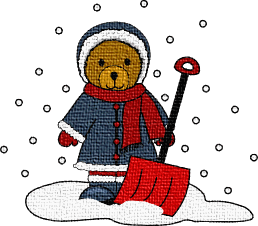| Teaching Heart's Let it Snow Theme
/ Unit If it is gonna snow, might as well
use the snow to help your students learn a few things.
|
| Teaching Heart's Let it Snow Theme
/ Unit If it is gonna snow, might as well
use the snow to help your students learn a few things.
|
| The Snowy Day by Ezra Jack Keats Boardbook - bigbook / Hardcover / paperback |
| Before Reading the Story: Ask your students if they have walked and played in the snow. Invite students to share their experiences. Then have students make a "Snowy Day" graph with you. Write on a sheet of construction paper, "Have you ever played in the snow?" Write yes on one side of the paper and no on the other side. Let each child glue a cotton ball on the side of his choice. |
![]()
 When Peter walked through the snow, he left footprints. Provide a snow scene with a variety of footprints in it. Use patterns of different animal prints. Then make patterns of the animals that would of made the prints. Have your students match the print to the animal. For a sequencing activity, provide picture cards of snowmen being built. Have the students sequence! SCIENCE ACTIVITY : Before Peter had to go into the house to warm up, he packed a handful of snow into a snowball. By the time he had bathed and dressed, the snowball had melted. Click here to find patterns of things that do and do not melt. Let each student cut out the pictures and sort them on construction paper by things that melt and things that do not melt!
Snowy Day - Predictions, Math and Science, Gross Motor Activities to go with the book |
![]()
Kipper -
Snowy Day and Other Stories (2000) Your students will enjoy these cute videos! The Adventures of Paddington Bear: Paddington's Snowy Day Watch the DVD of the show:
|
![]()
Questions About the Story.
How did the snow get piled up along the street? / Where do you think Peter lives? Explain your answer. / Peter knew he wasn't old enough to join the snowball fight. How do you think he felt? / What is something you will do when you are old enough? / Peter put a snowball in his pocket. When he looked for it later, it was gone. What happened to it?/ What do you think Peter and his friend will do in the snow?
![]()
Make a Chart like This:
| What Peter Saw | What Peter Heard | What Peter Felt |
Have students suggest what to write in each column.
![]()
Play this CD while you read your
Snowy Stories or complete your Snowy Activities Hymns, Carols, And Songs About Snow Bring the Snow Inide on a Snowy Day and let the kiddos play... |
In the story, Peter makes a little snowball and places it into his pocket. To his surprise, after some time in his warm house, the snowball is no longer there. Have students tell what they think happened to the snowball.
Do a class experiment by having students make snowballs, place them in sandwich bags (closed tightly), and predict what will happen. For an extra challenge, have them predict how long they think it will take for their snowball to melt. Place some snowballs closer to a heat source. Ask students to predict what will happen to those snowballs. Make a few of the snowballs very big. Have students predict how long it will take for the larger snowballs to melt. Record the data on a graph.
![]()
In the winter children are fascinated with the change that occur when water freezes. This activity will allow children to explore and play with ice, while being able to find the hidden treasures beneath. SCIENCE
MATERIALS:
1. Various size plastic containers (large plastic cups, deli
containers etc.)
2. Amall plastic animals
3. Water/Freezer
4. Small Plastic Hammers
Fill different size containers with cold water. Drop some small
plastic animals (or other neat stuff from your classroom) into
the containers with water and let it freeze over night. Empty
frozen forms out of the containers and place them in shallow
tray, bins or in your water table. Note, if you have difficulty
loosening up ice from the container, run it under warm water for
a minute or two to loosen it. You might provide children with
small plastic hammers for them to "pick" away at the
ice, much like mountain climbers do when they are snow hiking.
Children will love to find the hidden treasures hidden beneath
the ice!
![]()
Read the books below. Have the children compare and contrast these books!
| More Links To Resources
|
Teaching is a Work of Heart - 2010